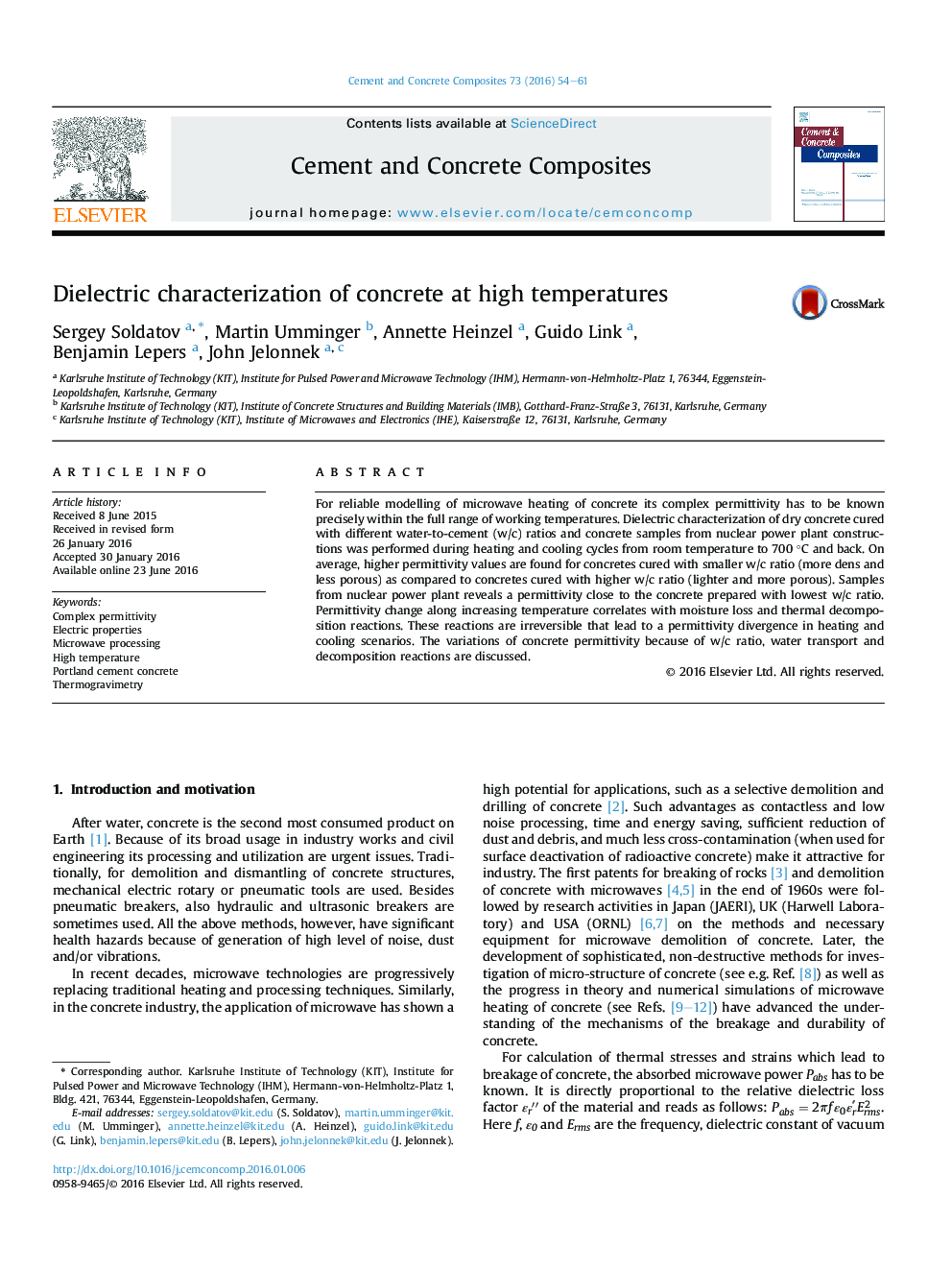| Article ID | Journal | Published Year | Pages | File Type |
|---|---|---|---|---|
| 1454257 | Cement and Concrete Composites | 2016 | 8 Pages |
Abstract
For reliable modelling of microwave heating of concrete its complex permittivity has to be known precisely within the full range of working temperatures. Dielectric characterization of dry concrete cured with different water-to-cement (w/c) ratios and concrete samples from nuclear power plant constructions was performed during heating and cooling cycles from room temperature to 700 °C and back. On average, higher permittivity values are found for concretes cured with smaller w/c ratio (more dens and less porous) as compared to concretes cured with higher w/c ratio (lighter and more porous). Samples from nuclear power plant reveals a permittivity close to the concrete prepared with lowest w/c ratio. Permittivity change along increasing temperature correlates with moisture loss and thermal decomposition reactions. These reactions are irreversible that lead to a permittivity divergence in heating and cooling scenarios. The variations of concrete permittivity because of w/c ratio, water transport and decomposition reactions are discussed.
Keywords
Related Topics
Physical Sciences and Engineering
Engineering
Industrial and Manufacturing Engineering
Authors
Sergey Soldatov, Martin Umminger, Annette Heinzel, Guido Link, Benjamin Lepers, John Jelonnek,
